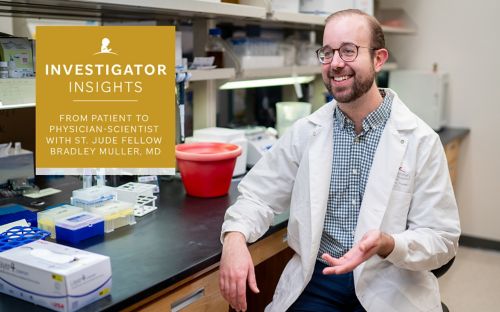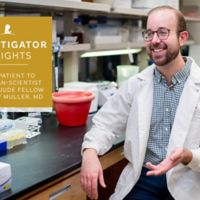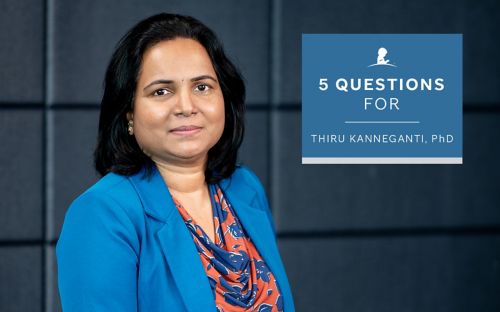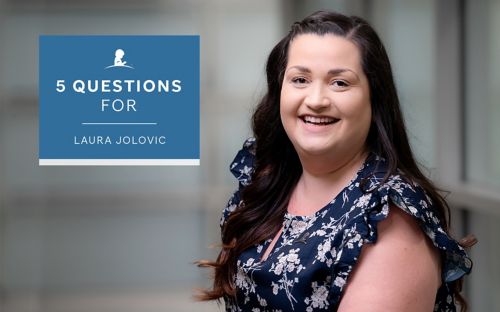Finding a path to discovery with Shengdar Tsai, PhD
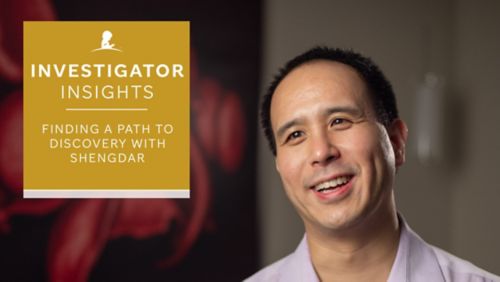
Shengdar Tsai, PhD searches for potential paths of discovery along the scientific journey.
Among the successes and breakthroughs of a scientist’s journey, there are bottlenecks, obstacles and failures. But even these hurdles are important steps along the scientific path to discovery. Often, what appears as frustrating gaps in knowledge or capabilities can become some of the most pivotal questions or challenges. At every turn, I try to see the most interesting way forward.
My lab works on genome editing technologies and therapies at St. Jude, focused on inherited blood disorders such as sickle cell disease and bone marrow failure. Genome editing is an amazing field with new developments constantly emerging. Every day offers an opportunity to learn something different, and as someone who is passionate about learning new things, I can’t think of a better job or field to be in.

Shengdar Tsai, PhD, in his laboratory at St. Jude.
There’s an exciting energy about learning something new that I try to capture in everything that I do. I am drawn to sports — such as sailboat racing, skiing and scuba diving — because they demand learning a technique you can improve over time. Ocean or mountain conditions never remain the same, so you need to stay flexible and adaptable. The lab demands a similar approach, where we must always consider new genome editing technologies and capabilities.
Sailboat racing reminds me a lot of science. There is an element of friendly competition when you have 20 or so boats maneuvering in tight quarters to cross the finish line first. As a sailor, you look across the water for a fast and efficient path to the finish line. Like publishing a high-impact paper, it is exhilarating to be first, but no matter the outcome, there is fun along the way.

Shengdar Tsai, PhD, and his partner, Lauren Schlukbier, enjoy time sailing.
I got my start as a graduate student in the lab of Jorge Piedrahita, where I worked on the genomics of human fetal growth restriction. I also had a side project, gene targeting to make pig biomedical models of human disease. Jorge trained in the lab of Oliver Smithies, who shared the Nobel Prize in Physiology and Medicine with Mario Capecchi and Martin Evans for the development of genetic modification by homologous recombination.
One of the challenges I encountered as a graduate student was that the rates of gene targeting by homologous recombination in somatic cells were very low. I wrote my PhD qualifying exam about engineering zinc finger DNA-binding domains and dreamed of learning how genome editing could increase gene targeting by more than a thousand-fold. As a post-doctoral fellow in the lab of Keith Joung, I began to work on defining and improving genome editors such as TALENs and CRISPR nucleases, which can be simply programmed with a short associated guide RNA.
Since then, the progress in the field has been exhilarating. It continues to move quickly, and it feels like we are at yet another inflection point, moving to more precise genome editors. When I started, it was challenging to edit most targets. CRISPR genome editors have transformed the life sciences because of the simplicity with which they can be programmed to recognize DNA targets within living cells.
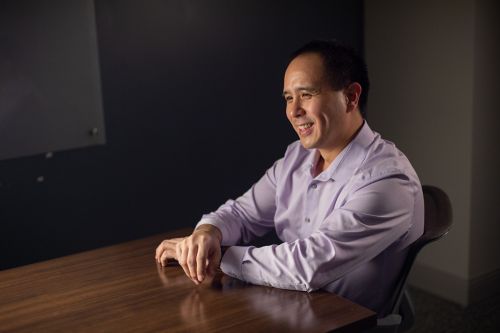
Shengdar Tsai, PhD, smiles while reminiscing on the progress of genome editing and technology development.
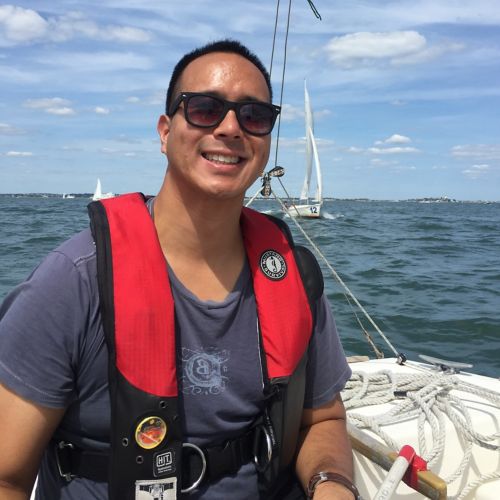
Shengdar finds time for another avenue of learning and adventure — sailboat racing.
I led the development of GUIDE-seq, which has become one of the most widely used methods for understanding the genome-wide activity of CRISPR editors. Recently, the very first genome editing medicine, developed by Vertex and CRISPR Therapeutics, was commercially approved. I was glad to know they used GUIDE-seq to evaluate the safety and genotoxicity of their approach.
In my lab at St. Jude, our goal is to be at the intersection of genome editing technology development and translational medicine: a place where our research can directly influence improvements in patients’ lives. As scientists, we all hope that our discoveries can benefit human medicine.
To realize this dream, we are now starting some exciting new projects. One is a project called PARADIGM (PARtnership to Advance Development of Individualized Genomic Medicines), which advances our vision to develop personalized genome editing medicines for St. Jude patients. We asked, “What if we treat otherwise incurable genetic conditions with individualized genome editing medicines?” Because CRISPR genome editors can be simply programmed with new short associated guide RNA molecules, we envision a future where rare genetic diseases can be treated with customized genome editors. It’s a truly collaborative partnership (with both internal and external partners) to advance the potential of genome editing medicines.

Members of the Tsai lab.
Another is part of Phase 2 for the NIH Somatic Cell Genome Editing (SCGE) Consortium Project, which aims to advance in vivo genome editing medicines. Our SCGE projects progress cellular and biochemical methods to understand the global activities of genome editors as we work to develop genome-editing medicines. There are increasing numbers of promising genome editing therapies and a vital need for good ways to characterize their safety and genome-wide activity.
It’s an exciting time for me and our lab as we embark on new paths, and each day, I can’t wait to see what’s new.
Learn more about Shengdar
- Learn about Shengdar’s research
- Explore gene editing’s role in sickle cell treatment
- Read about one of Shengdar’s methods for understanding genome editors, CHANGE-seq
- Discover PARADIGM
- Follow Shengdar on Twitter

